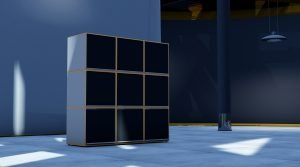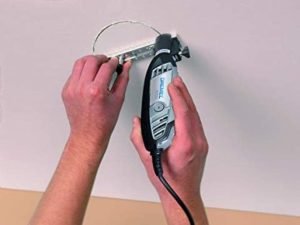Last Updated on November 18, 2024 by teamobn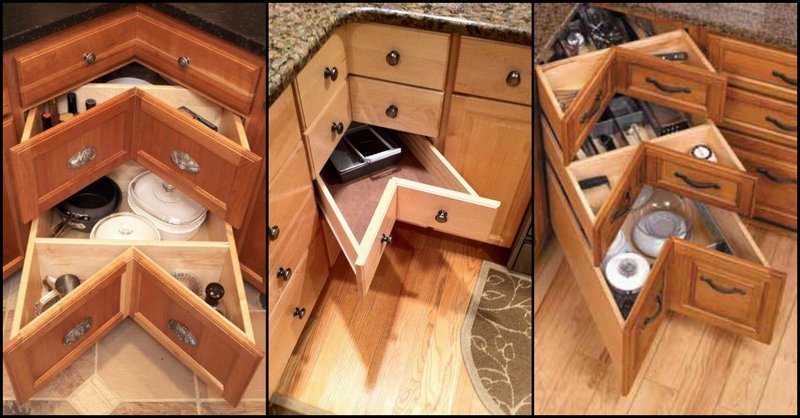
Corner cupboards in kitchens tend not to work very well. “Lazy Susan’s help but it’s still not easy to store and find. The owners of this kitchen decided to remove their lazy susan with specially designed drawers that can make the space more functional.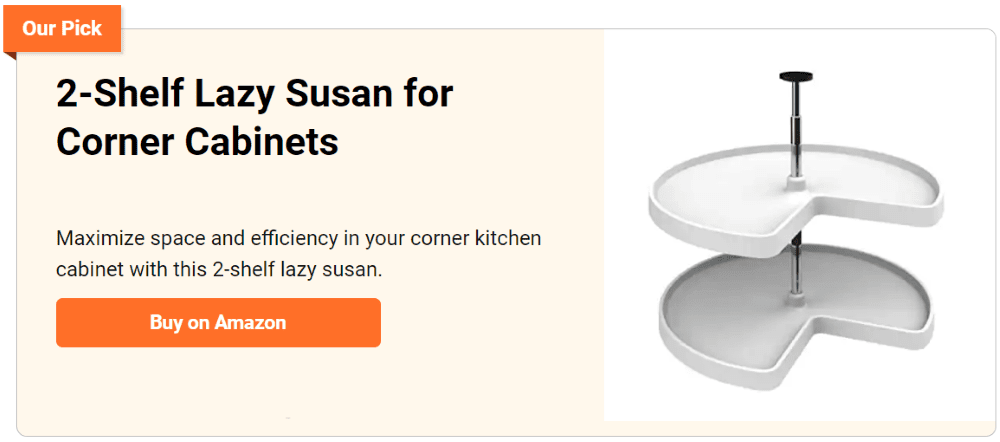
A corner cupboard without even a lazy Susan setup is very awkward to use. Yes, you can access all the space, but only with considerable difficulty. Enter the ‘lazy Susan”… it’s certainly easier to access items, but you’ll find that the rotation can knock off some of the items in the storage trays. That’s because you inevitably end up stacking things trying to maximize the space. Sound familiar? Building specialized corner kitchen cabinets with drawers is a better option as it provides easier access without having to knock off items. And cabinet drawers also allow better use of the vertical space. Sure you lose access to some of the cupboard space, but you do with a lazy Susan as well.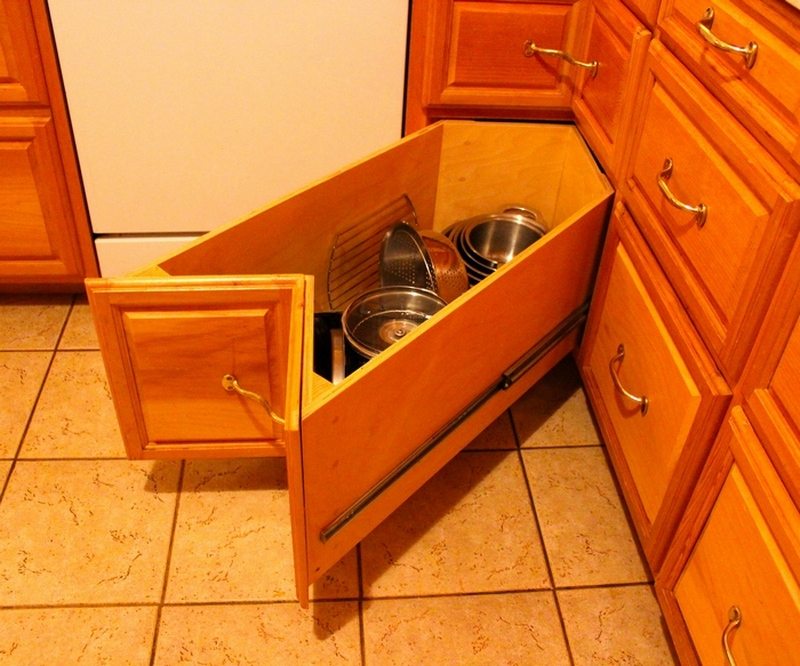
Benefits of a Corner Kitchen Cabinets With Drawers
Space savvy
Having cabinet drawers in a kitchen makes it most accessible. The adjustable shelf and the cabinet base are the only surfaces available for storing goods in a standard cabinet. Cabinet drawers feature up to four shelves. More space is made available by replacing hard-to-reach drawer boxes with full extension runners that pull the entire drawer out of the cabinet.
Get your kitchen tools organized
A full cabinet drawer offers much storage space in small cupboards. Most cabinet drawers in a cupboard are 400 x 250 x 405 mm. However, these measurements can be different to drawer cabinets. Drawers placed at the top of a drawer cabinet have a height of 400 mm. The ones placed at the bottom have a height of 405 mm. This means that the cabinet drawers placed at the bottom are deeper than the ones at the top. This means you can store more utensils at the bottom than the top.
Enhanced Ergonomics and Accessibility
Corner cabinet drawers are designed to bring items out into reach, reducing the need to stretch or strain when accessing kitchen essentials. This ergonomic improvement makes kitchen tasks easier and safer for people of all ages and abilities.
Customizable Storage Options
With the ability to customize drawer dimensions and divider configurations, corner cabinet drawers can adapt to various storage needs. This customization allows homeowners to create a place for everything, from bulky pots and pans to small utensils, ensuring that each item has a designated spot.
Improved Kitchen Aesthetics
Corner cabinet drawers can contribute to a sleek and organized kitchen appearance. By eliminating clutter and using corner spaces efficiently, these drawers can enhance the overall look and feel of the kitchen. Plus, the ability to choose materials and finishes that match the kitchen’s design theme ensures a cohesive aesthetic.
Increased Home Value
Investing in functional and attractive kitchen storage solutions like corner cabinet drawers can increase a home’s marketability and value. Potential buyers often look for efficient and innovative storage solutions; custom corner drawers can be a selling point.
Reduced Wastage of Space
Traditional corner cabinets often lead to unused space due to their inaccessible corners. On the other hand, corner drawers make full use of the corner, turning previously wasted areas into valuable storage space. This efficient use of space is particularly beneficial in smaller kitchens where every inch counts.
Ease of Cleaning and Maintenance
Corner cabinet drawers are easier to clean and maintain compared to traditional corner cabinet solutions. Since the drawers can be fully extended, accessing and wiping down every corner is straightforward, ensuring that cleanliness is maintained.
Building Corner Cabinet Drawers
If you’re new to DIY projects this project might not be fit for your level of experience. Get someone with more experience and equipment to help you out.
Materials
- 2×4 Timber
- 3/4″ MDF
- Drawer Slides
- Screws
- Drawer Handles
Tools
- Dovetail Jig
- Drill
- Sander
- Level
Instructions
Step 1: Plan Your Drawer
- Measure the dimensions of your corner cabinet space to determine the size of your drawer.
- Sketch a design of your drawer, including width, depth, and height. Consider how the drawer will fit into the corner space and slide out.
Step 2: Cut Your Materials
- Using the measurements from your plan, cut the 2×4 timber to create the frame for your drawer. This frame will support the drawer and attach to the cabinet.
- Cut the ¾” MDF to form your drawer’s sides, bottom, and front. Ensure the bottom piece fits snugly within the frame.
Step 3: Assemble the Frame
- Use the drill and screws to assemble the 2×4 frame. Check with the level to ensure all parts are even and straight.
- Sand any rough edges on the frame to prevent snags and ensure a smooth finish.
Step 4: Attach the Drawer Slides
- Attach the drawer slides to the sides of the frame according to the manufacturer’s instructions. Ensure the slides are level and aligned properly.
- Place the frame inside the corner cabinet to ensure it fits and slides out smoothly. Adjust as necessary.
Step 5: Build the Drawer
- Use the dovetail jig to create dovetail joints on the corners of the MDF pieces for the drawer’s sides, front, and back. This will ensure a strong, durable connection.
- Assemble the sides, front, and back of the drawer, using glue and screws to secure them together. Attach the bottom piece of MDF inside the assembled sides, ensuring it is flat and secure.
Step 6: Install the Drawer
- Attach the other side of the drawer slides to the sides of the drawer.
- Carefully slide the drawer into the frame to ensure it fits and operates smoothly.
Step 7: Finishing Touches
- Sand the entire drawer and frame to ensure a smooth finish. This is important for both the look and functionality of the drawer.
- Install the drawer handle on the front of the drawer using the drill and screws.
- If desired, paint or varnish the drawer to match your kitchen cabinets.
Step 8: Test and Adjust
- Test the corner cabinet drawer’s functionality by opening and closing it several times. Adjust the slides if the drawer doesn’t move smoothly.
- Load the drawer with items to ensure it can hold weight and operate as expected.
Click on any image to start the lightbox display. Use your Esc key to close the lightbox. You can also view the images as a slideshow if you prefer 😎







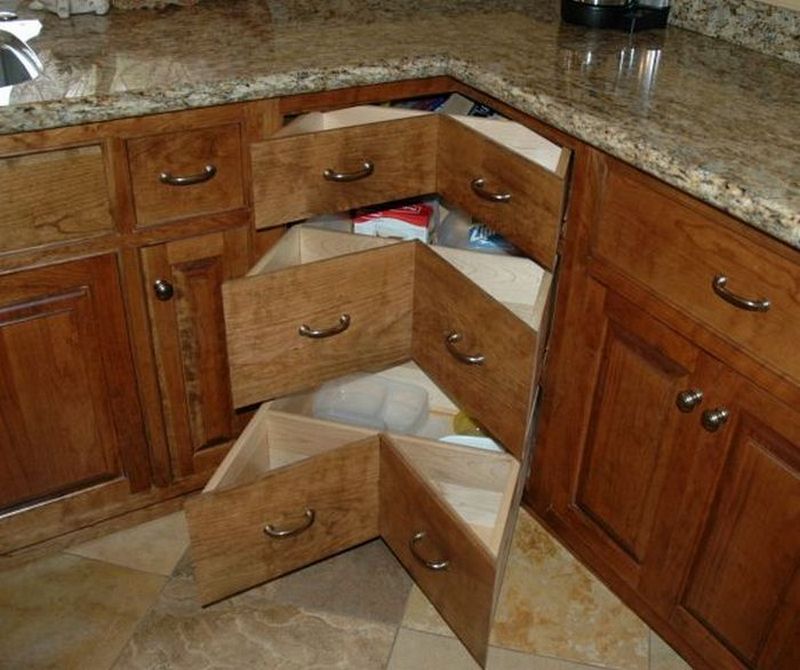
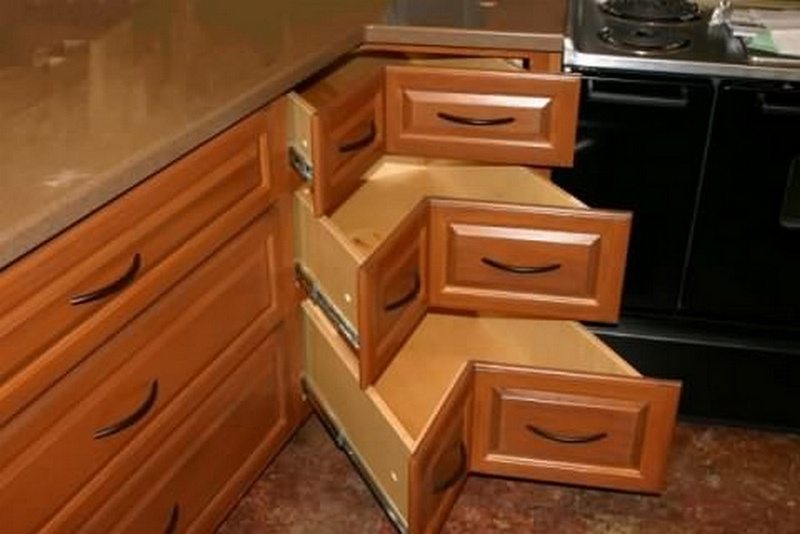
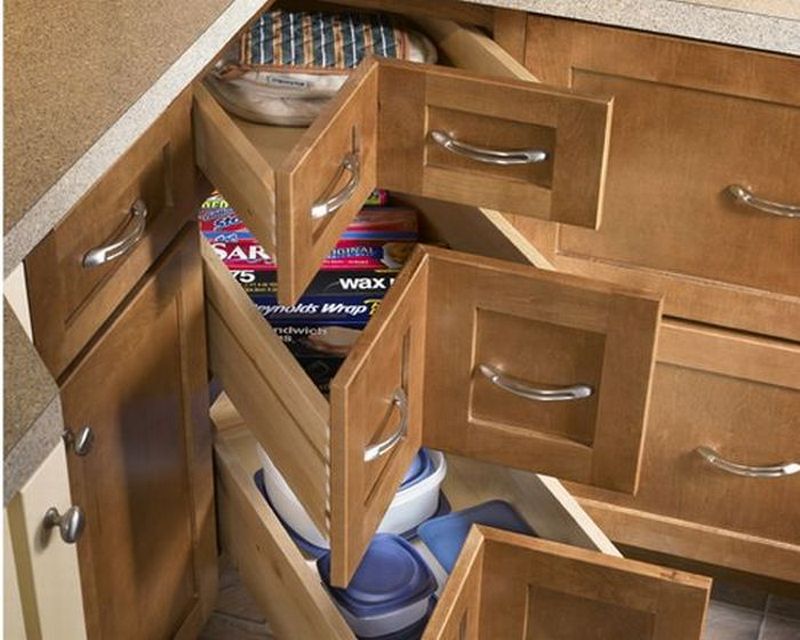
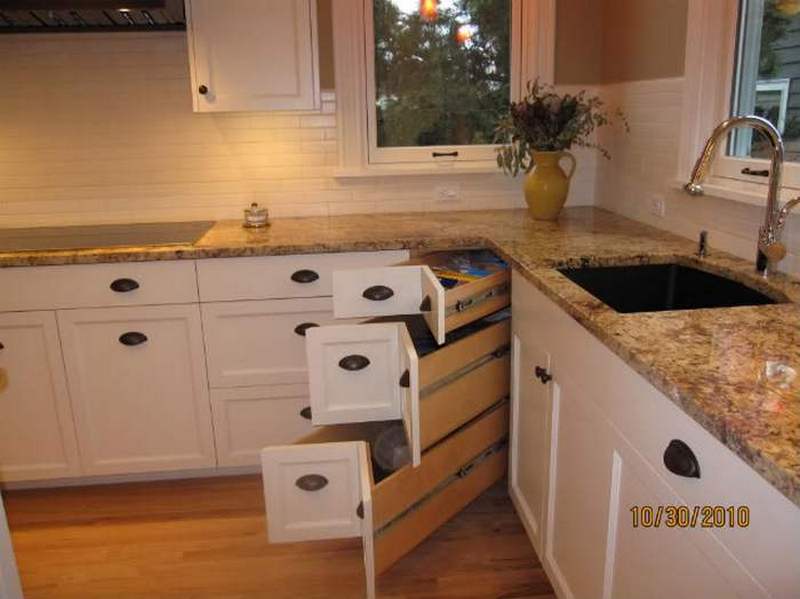
Organizational Tips for Corner Cabinet Drawers
Corner cabinet drawers are a smart storage solution that can transform an underutilized kitchen corner into a highly organized and functional space. You can enhance your kitchen’s efficiency and aesthetics by using this often-overlooked area. Here are some organizational tips to help you maximize the utility of your corner cabinet drawers.
Use Dividers
Dividers are essential in keeping your corner cabinet drawers organized. They allow you to separate items based on type or usage, making it easier to find what you need without rummaging through a cluttered drawer. Adjustable dividers are especially useful as they can be tailored to fit various item sizes, ensuring every utensil or tool has its place.
Stack Vertically
Maximize the vertical space in your corner cabinet drawers by stacking items. Use tiered organizers for plates, bowls, and other flatware to increase storage capacity and keep similar items together. This approach saves space and makes it easier to access what you need without disrupting the entire drawer’s organization.
Label Everything
Labeling is a simple yet effective way to maintain organization within your corner cabinet drawers. Label each section according to its contents. This helps you find items quickly and ensures that everything is returned to its rightful place after use. Labels are particularly helpful in drawers where you store various items, such as baking tools, spices, or kitchen gadgets.
Prioritize Items
Keep frequently used items at the front of your corner cabinet drawers or in the top drawer for easy access. Less frequently used items can be stored further back or in lower drawers. This prioritization ensures you can quickly grab what you use most often, reducing time and frustration during cooking or meal preparation.
Utilize Inserts
Drawer inserts can be incredibly useful in corner cabinet drawers. They’re designed to hold specific items, such as cutlery, utensils, or spices, in an organized manner. By selecting inserts that fit your storage needs, you can prevent items from shifting and keep everything neatly in place.
Regular Maintenance
Finally, regular maintenance is key to keeping your corner cabinet drawers organized. Take time every few months to declutter, reorganize, and clean the drawers. This helps you track what you have and ensures that your storage solutions continue serving you well.
Common Mistakes to Avoid
Building corner cabinet drawers is a great way to enhance your kitchen’s storage and functionality. However, it’s easy to make mistakes that can affect the project’s success. By being aware of these common pitfalls, you can ensure your corner cabinet drawers are both functional and beautiful. Here are some mistakes to avoid during the process.
Incorrect Measurements
One of the fundamental errors in creating corner cabinet drawers involves inaccurate space measurements. It’s not just about the basic dimensions; height, width, and depth must be measured precisely. You must also consider potential hindrances or irregular shapes within the cabinet area.
Sometimes, architectural features or existing plumbing can impact the usable space. If these measurements are not taken correctly, the result could be drawers that either do not fit properly or leave unused space, diminishing the efficiency and aesthetics of your kitchen. To avoid such pitfalls, double-check measurements and account for every possible variable affecting the drawer’s fit and function.
Overlooking Drawer Slides
Drawer slides are the backbone of corner cabinet drawer functionality. Selecting inappropriate slides—whether in terms of type, size, or weight capacity—can severely limit how well your drawers operate.
The slides must be robust enough to handle the drawer’s weight and its contents. Furthermore, they must be the right length to allow the drawer to extend fully, providing unimpeded access to everything inside.
Short slides might prevent the drawer from opening completely, making reaching items stored at the back difficult. Ensuring you have the correct slides means testing their extension and weight capacity before installation, guaranteeing the longevity and utility of your corner cabinet drawers.
Neglecting Structural Support
The importance of structural support for corner cabinet drawers cannot be overstated. Without it, you risk the drawers sagging or collapsing under stored items’ weight. This is particularly true for drawers intended to hold heavier objects. The frame of the drawer, usually constructed from materials like 2×4 timber, provides this essential support.
However, it’s not enough to simply have a frame; it must be securely attached to the cabinet to bear the load effectively. This means using the right fasteners and ensuring that every part of the drawer assembly is reinforced against the stresses of daily use. Proper support not only extends the life of your corner cabinet drawers but also ensures they remain functional and safe to use.
Skimping on Materials
Choosing inferior materials for your corner cabinet drawers can significantly compromise their longevity and visual appeal. High-quality timber, MDF, and durable hardware are essential for ensuring that your drawers can endure the rigors of everyday use without failing or looking worn out prematurely.
The initial cost of superior materials might be higher, but this investment pays off by minimizing the need for frequent repairs or early replacement. Additionally, quality materials can better withstand environmental factors like humidity and temperature changes, critical in kitchen settings. Therefore, selecting the best materials available within your budget is crucial for the success and sustainability of your corner cabinet drawers project.
Forgetting About Usability
During the excitement of designing and building corner cabinet drawers, it’s easy to overlook the practical aspect of how they will be used. The usability of drawers is paramount for a functional kitchen. This includes thoughtful placement of handles, ensuring drawers open and close smoothly, and organizing the interior efficiently.
Ergonomic design considerations, such as the height and reach of drawers, can significantly affect user comfort and satisfaction. Moreover, the type of handles and the drawer’s action (soft-close mechanisms, for example) can greatly enhance the user experience. Keeping the end-user in mind throughout the design and construction process will result in corner cabinet drawers that are not only beautiful but also highly functional and enjoyable to use.
Not Planning for Organization
The primary goal of installing corner cabinet drawers is to maximize storage and organization. Without a clear plan for organizing these drawers, you risk underutilizing the space. Incorporating dividers, inserts, and tiered organizers from the outset can transform a simple drawer into a highly efficient storage solution.
These organizational tools allow for customization and flexibility, adapting to your storage needs over time. By considering the specific items you plan to store and designing your drawers around these needs, you can ensure that every inch of space is utilized effectively, making your corner cabinet drawers a cornerstone of kitchen organization.
Skipping the Finishing Touches
The final steps in creating corner cabinet drawers, such as sanding, painting, or sealing, are crucial for achieving a polished and durable finish. These finishing touches enhance the drawers’ appearance and protect them from wear, tear, and damage from spills or moisture.
Sanding smooths the surface, preventing splinters and ensuring a uniform finish, while painting or sealing can tie the drawers into the kitchen aesthetic. Skipping these steps can lead to a project that looks unfinished or deteriorates quickly. Taking the time to properly finish your corner cabinet drawers will extend their lifespan and ensure they remain an attractive and valuable part of your kitchen.
FAQ on Building Corner Cabinet Drawers
- What are corner cabinet drawers?
- Corner cabinet drawers are innovative storage solutions designed to maximize the use of corner spaces in kitchens or other areas. Unlike traditional corner cabinets that often waste space or are difficult to access, these drawers allow for easy access to items by pulling out into the room and using the entire corner.
- Why should I consider installing corner cabinet drawers?
- Corner cabinet drawers offer advantages, including improved accessibility, better space utilization, and enhanced organization. They transform hard-to-reach corner spaces into functional storage areas, making it easier to store and retrieve items without digging through deep cabinets.
- Can I install corner cabinet drawers in an existing kitchen?
- Yes, corner cabinet drawers can be installed in existing kitchens. However, the installation process may require modifications to the existing cabinetry to accommodate the new drawers. It’s often recommended to consult a professional to ensure the installation is feasible and achieve the best results.
- What materials are best for building corner cabinet drawers?
- High-quality materials such as solid wood, plywood, or MDF (Medium Density Fiberboard) are recommended for building corner cabinet drawers. These materials offer durability and stability, ensuring the drawers can withstand regular use. Additionally, choosing high-quality drawer slides and handles is important for the overall functionality and longevity of the drawers.
- How do I organize my corner cabinet drawers efficiently?
- To organize corner cabinet drawers efficiently, consider using dividers, inserts, or tiered organizers to separate and categorize items. Plan the layout based on the items you use most frequently, placing those items in the most accessible spots. Regularly decluttering and reassessing your organization’s strategy can also help maintain efficiency.
- Are corner cabinet drawers difficult to install?
- The difficulty level of installing corner cabinet drawers can vary based on your DIY experience and the complexity of the drawer design. While it’s possible for experienced DIYers to undertake this project, novices might find it challenging and may benefit from professional assistance.
- How do you make a DIY corner cabinet with reclaimed plywood?
- Building a DIY corner cabinet with reclaimed plywood is a rewarding project that saves money and adds a personalized touch to your home. Start by cutting the plywood to size with beveled edges for a snug fit, assemble the frame using clamps and wood glue for stability, and prepare triangular pieces for the top and base. Add shelves, attach a polished MDF top, and finish with sanding, painting, and optional decorative details like beadboard wallpaper, resulting in a functional and stylish cabinet tailored to your space.
- How do you measure and mark the top and bottom of a DIY corner cabinet?
- To accurately measure and mark the top and bottom of a DIY corner cabinet, start by gathering tools like a tape measure, carpenter’s square, pencil, and angle finder. Measure the width, depth, and corner angle of the space, transferring these dimensions onto your wood using straight and angled lines as needed. Double-check all measurements and markings before cutting to ensure precise alignment for a perfect fit during assembly.
- How do you attach the front facing to a corner cabinet?
- To attach the front facing to a corner cabinet, start by selecting a straight, warp-free piece of plywood and sanding it for a smooth join. Apply an even layer of high-quality wood glue to the cabinet frame and carefully align the front facing piece, pressing it into place if slightly bowed. Secure it with a nail gun, starting from the center and moving outward, and check for proper alignment before the glue sets for a professional finish.
- What is the process to assemble shelves for a DIY corner cabinet?
- To assemble shelves for a DIY corner cabinet, start by preparing your materials, including shelf boards, screws, and a drill, and sanding the boards to smooth their edges. Measure the cabinet’s interior to determine shelf dimensions, cut the boards to size, and position them at the desired heights, ensuring they are level. Secure the shelves with brackets, screws, or wooden dowels, and add corner braces if needed for extra stability, resulting in a sturdy and functional cabinet.
- How can beadboard wallpaper be used to enhance the appearance of a corner cabinet?
- Adding beadboard wallpaper to a corner cabinet is an easy way to elevate its style. Choose a wallpaper that complements your room, clean and smooth the back panel of the cabinet, and carefully measure and cut the wallpaper to fit. Apply it using adhesive, smooth out air bubbles, trim the excess, and consider sealing it for durability, creating a textured, charming backdrop that enhances your cabinet’s appeal.
- What are the steps to rip plywood on a table saw for a corner cabinet?
- Ripping plywood for a corner cabinet on a table saw requires preparation and precision. Start by ensuring your table saw is in good condition, the blade is sharp, and you have safety gear ready. Measure and mark the plywood carefully, adjust the blade to the required angle and height, and feed the plywood steadily through the saw, using push sticks for control and safety. Finish by inspecting and sanding the edges to ensure smooth, accurate cuts for your cabinet assembly.
- How should you decide on a paint color for a DIY corner cabinet?
- Choosing the perfect paint color for your DIY corner cabinet involves balancing style and market appeal. Assess the environment where the cabinet will be placed, opting for light colors to brighten a space or darker hues for a cosy feel. Test neutral shades for timeless versatility or bold colors for a striking focal point while considering trends, the cabinet’s material, and hardware to ensure a cohesive and appealing final look.
- How can edge banding be used to disguise the raw edge of plywood shelves?
- Using edge banding to disguise raw plywood edges on shelves is an easy way to achieve a polished look. Start by selecting an edge banding material that matches your shelf, then sand the edges smooth for proper adhesion. Apply the pre-glued banding using heat, trim the excess with a utility knife or edge banding trimmer, and finish with a matching stain or varnish for a seamless, professional appearance.
- Why might someone choose not to add a window as a door on a corner cabinet?
- Choosing not to incorporate a window as a door on a corner cabinet often comes down to practical and aesthetic concerns. Adding a window can create an imbalance, increasing the risk of tipping, especially in homes with children or pets. Additionally, modifying the cabinet for glass may weaken its structural integrity, and the design might clash with the overall decor, disrupting the room’s cohesive look.
- What are some alternatives to using a 4×4 for clamping during cabinet assembly?
- Use a carpenter’s square to maintain precise angles and alignment during glue-ups. Spare 2x4s or similar lumber can apply pressure and ensure alignment effectively. A flat, stable surface like a workbench helps keep pieces aligned, while pocket hole joinery with a jig provides strong joints without the need for external clamps. These versatile options adapt to available tools, ensuring a smooth assembly process.
- Should a window be added as a door for a DIY corner cabinet?
- Adding a window as a door for a DIY corner cabinet may seem creative but comes with challenges. The additional weight can compromise the cabinet’s stability, increasing the risk of tipping forward. It also complicates precise measurements needed for a snug fit and may clash with the overall design. Alternatives like glass inserts, lightweight acrylic panels, or traditional cabinet doors can provide a more practical and visually cohesive solution.
Conclusion
Corner cabinet drawers are a practical and innovative solution for maximizing kitchen storage and improving accessibility. By carefully planning, selecting quality materials, and incorporating user-friendly design features, homeowners can transform once-underutilized spaces into efficient storage areas.
If you liked this project, you will also like viewing these DIY kitchen storage projects…


